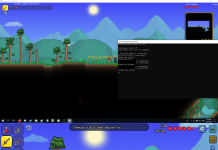Are you seeking to internationalize your games? Have you already engaged the providers of the game localization services, or are you stranded identifying the most ideal strategies?
If you are not sure about the best strategies to use to adapt your games for global players (games localization), don’t worry. We, Future Trans, a language service provider (LSP), are here to assist you. In this post, let us delve into the most viable ways of making your global audience appreciate your games more. Let us get started.
Table of Contents
Why You Need to Adapt your Games for Global Players
Before identifying the most rewarding strategies to adapt your games for global players, you must know the reasons for doing it. Doing so will motivate you to commit your time and other resources to the exercise.
Notably, failure to know the purpose of the adaptation can make you see as if you are wasting your money. What is the purpose of the adaptation of games for a global audience?
Increased Potential of Revenue
One of the main goals of adapting your games for global players is to increase your revenue potential. When you adapt your games, you make them simple for people who could have found them difficult in their original version. In return, you acquire new customers willing to play the games.
Notably, it is impossible for global players to play games that are not interesting to them. How do they find a game interesting? It is by identifying with the game. If a game has a language and settings that players understand, they get more enticed to play it. However, a game with a foreign language or offensive settings is a turn-off to some global players.
When you adapt a game for global players, you target several markets instead of one. In other words, you start selling your game in the domestic market and spread your sales net to the foreign markets.
This move not only increases the volumes of the games that you sell but also increases your income through the foreign exchange rate margin. In return, you get revenue from multiple channels.
Improved App Store Rankings
Adapting games for global players increases the visibility of your games to your target audience. Notably, a significant percentage of video game downloads are non-English. So, your games can fail to get several downloads if you do not employ target market adaptation.
How does it work? When a person searches for games, the first search results are in their local region. In other words, the first results feature the local cultural aspects of the searcher. If you localize your games, you make them among the first to appear in the search results.
Beat Competition
If you localize your games, you stand out from your competitors who are yet to localize their games. In other words, you attract more customers than your competitors who sell similar games. Notably, some game developers care less about localizing their games. Such developers are the lot that you can beat after localizing your games.
Increased Customer Satisfaction
A satisfied customer keeps on coming for more purchases. How do you satisfy your games’ customers? You can do it by giving them what they want. Notably, localization of games is one way of aligning your games with the taste and preferences of your customer. In the end, such customers keep buying almost every game you develop.
Strategies of Adapting Your Games for Global Audience
Now that you know the purpose of localizing your games, how do you carry out the exercise? The following are some of the strategies you can apply to achieve this objective:
Perform a Content Analysis
If you intend to localize your games, you must identify the components that require localization. Notably, some components are universal, and they do not need localization. However, there are other components that you must localize.
What determines the parts to be localized? Your target audience and your budget. The target audience takes priority when it comes to the identification of the parts of your games you must localize. However, the customer needs can be too many. In that instance, you should prioritize the parts that need localization for your game to thrive in a global market.
Create a Lockpit
The next step entails the development of a lockpit. This feature denotes a complete guide to your games’ content. It also provides any other content related to your games. Notably, your localizing team relies on your games’ lockpit when giving instructions to your translators during a localization exercise.
Adapt Your Code for the Global Audience
After creating a lockpit, the next step entails pulling the content and transferring it to the Translation Management System (TMS). Notably, it is impossible to translate a game that does not feature a localizable context. So, you have to give your games’ content access to your localization team by localizing your code.
The localization of a code enables your localization team to navigate the content of your games and identify the parts that require localization. It equates to writing signposts within the content of your games in a language understandable to your localization team.
Integrate Your Code with the Localization Platform
After localizing your code, you must present it to the localization team via the TMS. However, there is a need for compatibility between your code and the localization teams’ TMS.
One way to integrate your code with the TMS is via custom-built connectors or pre-built integrations. Such tools enable your code repository to transfer the code contents into the localization team’s TMS.
Notably, the transfer of content from the code follows a standard procedure. However, the workflow rate depends on the volume of the content in the code.
The Real Localization Process
After the content moves from your code into the localization team’s TMS, the actual localization of the games’ content can begin. During this process, a team of linguists translates the contents of your games into a context acceptable to your target global audience.
Notably, you have the option of collecting your games’ resource files together and taking them to your localization team. However, the process is tedious. The usage of TMS makes the process simple. A TMS platform centralizes all games’ content in readiness for localization.
Consideration of Regional Localization
During the localization process, the team considers several regional aspects. Some of these aspects are the cultural and legal aspects of the target region. To achieve this objective, the localization team must understand what to add to the games’ content and what to remove. In other words, the team must shape the content to match the target audience’s societal values.
Sometimes, the localization team has to rework part of the story that a game features. This requirement denotes the complexity of a game’s localization process.
Run Quality Checks
The adaptation of games for the local players does not stop after the localization process. The next step entails running quality checks. How is it done?
After the translators localize your games’ content, another independent translator must check spelling, grammar, and any linguistic issues that the localized content may have. This approach is one of the best practices that result in high-quality localized game content.
The quality checks also ensure that the localized game does not lose the original theme. Notably, the game’s name often remains the same, and global players can share insights on how to play the game. So, one region should not have a different theme from the universally-intended theme.
Integration Into the Main Game
To reiterate, localization does not apply to all parts of the game. For this reason, there is a need to re-integrate the localized parts with the main game. The main game can either be in the original or target language. If the main game undergoes translation, the process must apply to the entire game. However, localization only affects some parts of the game.
The reintegration process combines the localized parts with the original parts of the game.
Factors to Consider When Localizing Your Games
What must you consider when localizing your games? The following is a list of the factors that you must consider:
- Cultural norms: Your localization must consider traditions, religion, belief systems, and language diversity.
- Language Locales: Always use language variants and codes instead of flags during a game’s localization process.
- The correct format: Leave room for extra words, time formats, dialogues, and characters during the early stages of the localization process.
- Consider the multimedia: Always consider using different devices to host the games. Some people use smartphones, while others use laptops and other devices to host games. In other words, your localized games should be compatible with multiple hosting devices.
- Consider local laws and regulations: Age limits and the use of violence in video games are some of the aspects that can make the local authorities ban your games. For this reason, always research the local laws and regulations governing games’ content in your target global region.
The Bottom Line
Now that you understand the benefits and the process of adapting your games for the global audience, it is time to roll out the process.






